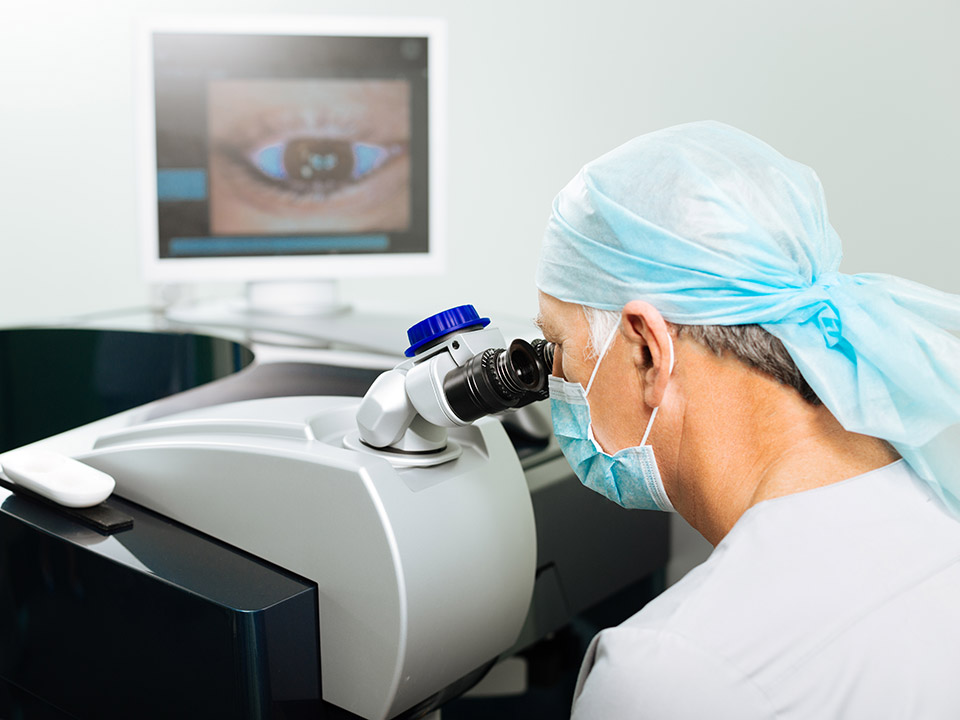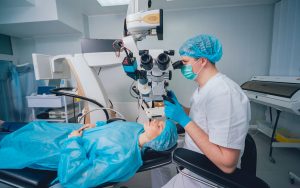Stargardt disease

Stargardt macular degeneration is a genetic eye disorder that causes progressive vision loss. It is called Stargardt macular degeneration because it affects a small area near the center of the retina, the specialized light-sensitive tissue that lines the back of the eye, called the macula. The macula is responsible for sharp central vision, which is needed for detailed tasks such as reading, driving, and recognizing faces. Lipofuscin, a fatty yellow substance, builds up in cells underlying the macula in most people with Stargardt macular degeneration. The abnormal accumulation of this substance can damage cells that are critical to clear central vision. People with Stargardt macular degeneration have problems with night vision, which can make it difficult to navigate in low light. In addition to central vision loss, it also affects color vision of some affected individuals. It typically appears in late childhood to early adulthood, and worsens over time. The estimated prevalence of Stargardt macular degeneration is 1 in 8,000 to 10,000 individuals. Stargardt macular degeneration is the most common form of juvenile macular degeneration.
Cause of Stargardt Macular Degeneration
Stargardt macular degeneration is caused by mutations in the ABCA4 or ELOVL4 gene. The ABCA4 and ELOVL4 genes provide instructions for making structures that are found in the retina to transport waste out of photoreceptor cells. Phototransduction is the process by which light enters the eye and is converted into electrical signals that are transmitted to the brain. This process produces waste by-products that the body naturally removes. When ABCA4 and ELOVL4 genes are mutated, the products needed to transport waste cannot be made. Waste builds up and form lipofuscin in the photoreceptor cells and the surrounding cells of the retina, eventually causing cell death and degeneration of tissue.
Characteristics of Stargardt Disease Genes
The ELOVL4 gene produces protein that plays a role in making a group of fats called very-long-chain fatty acids. The ELOVL4 protein is mainly active in the retina but is also expressed in the brain and skin. Mutations in the ELOVL4 gene lead to the formation of ELOVL4 protein clumps that build up and may interfere with retinal cell functions, which ultimately leads to cell death. When mutations in the ABCA4 gene cause this condition, it is inherited in an autosomal recessive pattern. This means both copies of the ABCA4 gene in each cell inherited by the parents have mutations. A damaged ABCA4 gene cannot properly remove toxic by-products from the Phototransduction process, leading to over accumulation of lipofuscin.
Stargardt Disease Inheritance
Stargardt disease is most commonly inherited in an autosomal recessive manner. This means that to be affected, people inherit one mutated copy of the gene from each parent, who are called carriers. Carriers of an autosomal recessive condition typically do not have any signs or symptoms. The Genetic Testing Registry (GTR) provides information about the genetic tests available for Stargardt disease. The intended audience for the GTR is health care providers and researchers. Patients and consumers with specific questions about genetic testing for this condition should speak with their ophthalmologist or genetics professional. Genetic testing may help distinguish the type of Stargardt disease a person has and provide information about the mode of inheritance and risk to other families. There is very little that can be done to slow its progression. Currently, there is no cure for Stargardt disease. Wearing sunglasses to protect the eyes from UVA, UVB, and bright light may be of some benefit. Animal studies have shown that taking excessive amounts of vitamin A and beta-carotene could promote the additional accumulation of lipofuscin, as well as a toxic vitamin A derivative called A2E. It is typically recommended that these be avoided by individuals susceptible to Stargardt disease.




